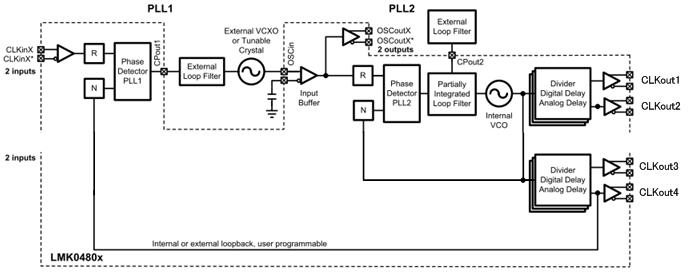Hi Team,
In the LMK04208 datasheet, there is below description for external VCO mode.
I couldn't understand why there would be deterministic phase difference between clock input and VCO feedback clock in 0-delay mode.
Could you elaborate for this description ?
As long as used in 0-delay mode, connecting the clock output to the PFD, I think both phase are synchronized.
Best Regards,
Kawai


